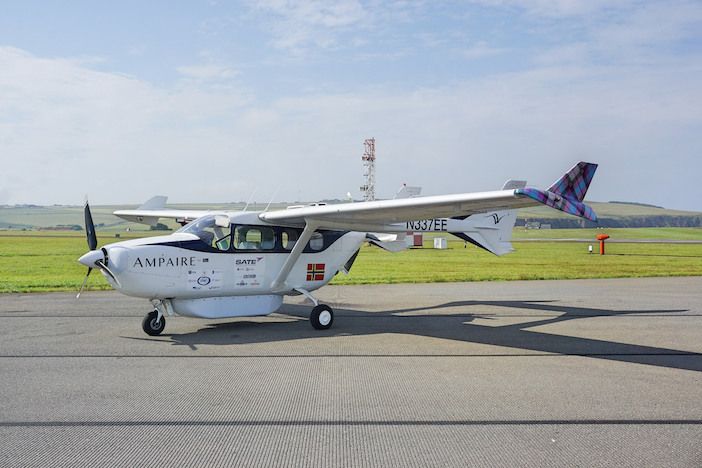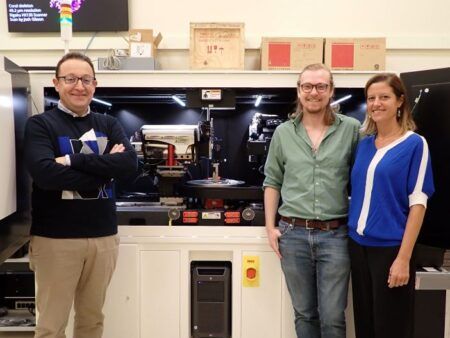by Andrew Rae, professor of engineering at University of the Highlands and the Islands
As Ampaire’s UK chief engineer, a position I currently hold part time, I am focused predominantly on two projects. Both are part of the UK’s Future Flight Challenge program. The first is part of the Sustainable Aviation Test Environment project being led by the Highlands and Island Airport and is based in the Orkney Islands. The second is part of the 2Zero project led by Ampaire and based in Devon and Cornwall.
Both projects are using Ampaire’s modified Cessna 337 hybrid-electric aircraft, the front engine of which has been replaced with a 160kW electric motor and a battery pack housed in a ventral fairing. The aircraft has flown previously in California and Hawaii and is being used in the UK to explore its potential within realistic operational environments and route networks. This includes the installation and evaluation of the necessary infrastructure, as well as further exploration of the aircraft’s performance.
One of the purposes of the Sustainable Aviation Test Environment (SATE) project is to demonstrate alternatively fueled and alternatively piloted aircraft in a realistic operational airport environment. It will also trial real-world use cases, such as medical deliveries and sub-regional routes for passenger-carrying aircraft. The flights in both projects, between Wick and Kirkwall in SATE, and between Exeter and Newquay in 2Zero have shown that the use of hybrid-electric aircraft is viable on these routes.
I spent the first two decades of my career at the Royal Aircraft Establishment. As an aerodynamicist I worked on wing design and design methods for predominantly civil aircraft, including the development of wind-tunnel test techniques at the 5m Pressurised Low-Speed Wind Tunnel at Farnborough. Alongside this design work I also became the Approved Technical Authority for modified aircraft at the flight test center at Farnborough, and then at Boscombe Down, working on platforms such as E-3D Sentry, BAC 1-11, Canberra, Andover, Nimrod, Hercules, Jaguar, Tornado, Sea King, Chinook and Lynx. The combination of conceptual and operational experience has been useful in preparing for and executing the flight demonstration of a heavily modified aircraft such as Ampaire’s hybrid-electric Cessna 337.
Much of my recent activity has been obtaining the CAA’s approval for the aircraft to fly in the UK, based on its US experimental Certificate of Airworthiness. The aircraft has changed from being a R&D platform into being used for the market survey phase.
The emergence of alternatively fueled aircraft is being called the third revolution in aerospace, after the birth of flight and the jet engine. Dynamic start-up companies like Ampaire have emerged alongside the traditional OEMs to develop these aircraft. There is a different set of imperatives driving modern aircraft design now. Priorities have been altered by climate change. The UK is at the forefront of these activities with investment such as the Future Flight Challenge project, and ambitions such as the Scottish Government’s to create the world’s first net-zero carbon aviation system in the Highlands and Islands region.
To achieve these goals, alternative powertrains and platform configurations need to be considered, and traditional design methods need to change to accommodate the new technologies. This is providing exciting challenges and opportunities for those of us in the industry, and it promises to be an entertaining journey!
 Andrew Rae is professor of engineering at University of the Highlands and the Islands and chief engineer for Ampaire in the UK.
Andrew Rae is professor of engineering at University of the Highlands and the Islands and chief engineer for Ampaire in the UK.





